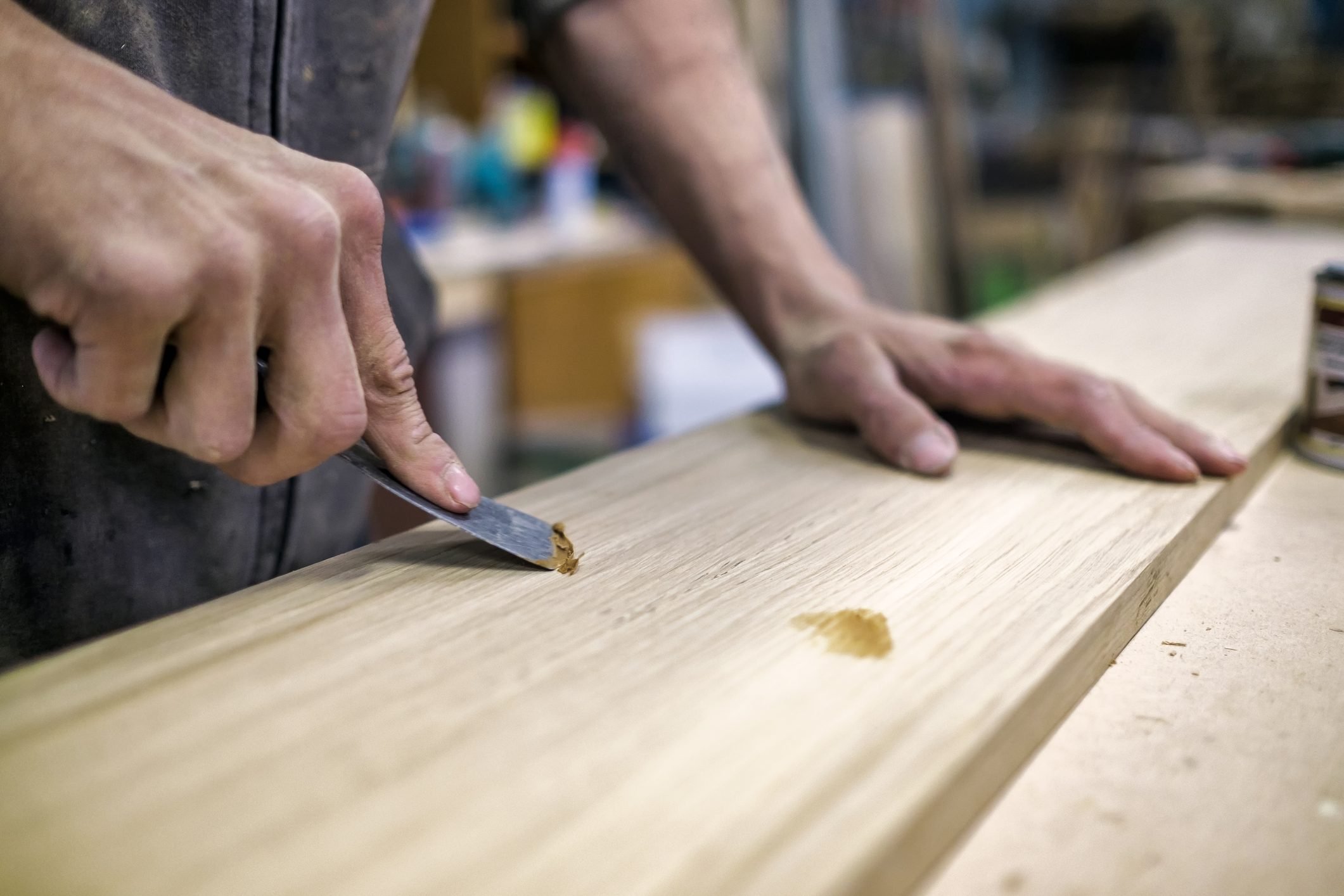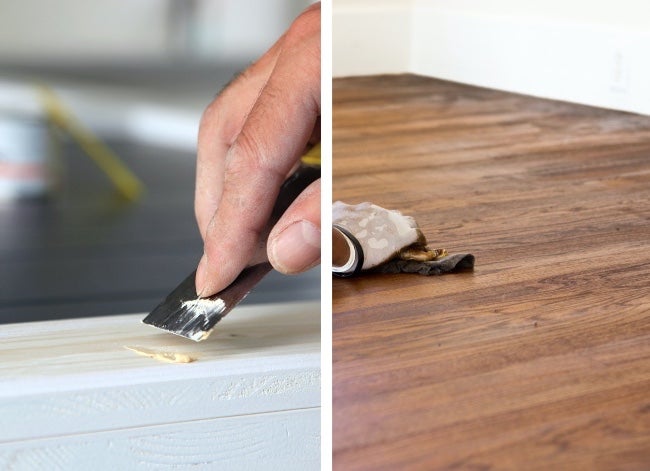Wood putty and wood filler are terms that are often used interchangeably, but they are two different products. In short, wood filler is a more durable material used for larger repairs, while wood putty is better suited for filling very small holes.
Wood putty is a malleable material that can be shaped and molded to fit into tiny crevices. It is usually made of a mixture of wood dust and a binder, such as a varnish or resin. The primary purpose of wood putty is to fill small cracks, holes, and gaps in wood surfaces.
On the other hand, wood filler is a much more heavy-duty material. It is composed of a two-part epoxy resin that hardens to a rock-solid finish. Unlike wood putty, which is primarily used for cosmetic purposes, wood filler is intended to repair larger areas of damage, such as cracks, gouges, and major holes. In this article, we will explore the differences between wood putty and wood filler in-depth. We will also provide some tips on which one to use for different types of repairs, and how to apply them correctly for an effective fix.

Credit: www.familyhandyman.com
Understanding Wood Putty
Wood putty and wood filler are often used interchangeably, but they have distinct differences. Wood putty is a mixture of wood dust and a binding agent, while wood filler is a two-part epoxy or water-based putty. Wood putty is best used for small repairs, while wood filler is preferable for larger holes and gaps.
It’s important to match the color of the putty or filler with the wood to achieve a seamless finish. Additionally, both products can be sanded and painted over once dry. Keeping these differences in mind will help you choose the right product for your specific project.
Understanding Wood Filler
When it comes to fixing wood furniture or floors, you may need a little help from fillers or putties. But what’s the difference? Wood filler is a substance that fills gaps or holes in wood, while wood putty is primarily used to patch small surface defects.
Though these terms are sometimes used interchangeably, they are not exactly the same thing. When choosing between wood filler and wood putty, consider the type of application you’ll be using it for. Both have their own advantages and disadvantages, so choose the one that suits your needs best.
Finally, it’s important to follow the 6 guidelines mentioned above to craft effective and engaging content for your readers.
Differences Between Wood Putty And Wood Filler
Wood putty and wood filler may sound similar, but they have some differences. Wood putty is a quick-drying material that is perfect for small holes and cracks. It’s usually used for furniture, cabinets, and woodwork. Wood filler, on the other hand, is meant for larger spaces and is applied before finishing.
It’s commonly used for hardwood floors and decks. While both can be used for minor finishing touch-ups, they have different consistencies and should be applied accordingly. It’s important to pay attention to your project’s needs when choosing between the two.
Adding the right product in the right amount can determine the success of your woodworking project.
When To Use Wood Putty Or Wood Filler
Wood putty and wood filler may seem similar, but they have important differences in their uses. Wood putty is a dough-like substance that fills small holes and cracks in wood surfaces. It is best suited for cosmetic repairs and is easy to sand and stain.
On the other hand, wood filler is a two-part epoxy that is designed to repair larger damage to wood, such as rotted wood or holes. It hardens to a durable finish and is resistant to shrinking or cracking over time.
When deciding which to use, consider the size and type of damage, as well as the finish you want to achieve. Always follow the manufacturer’s instructions carefully for the best results.
Tips For Applying Wood Putty Or Wood Filler
When it comes to fixing damaged wood, using either wood putty or wood filler is recommended. Before application, it is important to ensure that the damaged area is clean and completely dry. Using a putty knife, apply wood putty to the damaged area and smooth it out.
On the other hand, for wood filler, mix the two components based on the manufacturer’s instructions and apply it using a putty knife. Allow the putty or filler to dry completely before sanding and finishing. Remember to avoid using overused phrases and terms and use a variety of expressions at the start of new sections.
Lastly, make sure to write in active voice and maintain uniqueness without duplicating content.
Frequently Asked Questions For Wood Putty Vs Wood Filler: What’S The Difference
What Is Wood Putty Used For?
Wood putty is a thick paste used to fill in small to medium-sized holes, cracks, or gaps in wooden surfaces. It is commonly used for repairing minor damages on furniture, cabinets, floors, or other wooden objects.
What Is Wood Filler Made Of?
Wood fillers are made from a variety of ingredients such as sawdust, wood fiber, cellulose, and other synthetic materials mixed with a binder like epoxy or polyurethane. They come in various colors and textures that can match the wood being repaired.
Can You Stain Wood Filler?
Yes, you can stain wood filler to match the color of wood being repaired. However, some fillers may not absorb stain evenly or may appear blotchy. It’s best to test the stain on a small area before applying it to the entire surface.
How Long Does Wood Filler Take To Dry?
Drying time of wood filler varies depending on the type and brand. Some take as little as 15 minutes to dry while others may take several hours or even overnight. It is essential to follow the manufacturer’s recommendations for proper drying time.
Can I Use Wood Putty Instead Of Wood Filler?
While wood putty and wood filler are both used to repair wooden surfaces, they have different purposes. Wood putty is ideal for small cosmetic repairs, while wood filler is best for larger cracks, holes, or gaps. Using the wrong product may not provide a durable or effective repair.
Conclusion
As we come to the end of our discussion on wood putty vs. Wood filler, it’s important to remember that both have their specific uses and benefits. Wood putty is best used for small surface-level repairs, while wood filler is ideal for larger and deeper gaps, holes and cracks.
Additionally, wood filler can be stained and finished to seamlessly blend in with the surrounding wood, whereas wood putty cannot. When choosing between the two, consider the size and depth of the repair needed and the desired finish. Ultimately, the right choice will depend on your specific project and goals.
Hopefully, this article has provided you with the knowledge and understanding needed to confidently choose the best option for your woodworking needs. Remember, using the right filler material will not only ensure the longevity and structural integrity of your project but also its aesthetic appeal.
